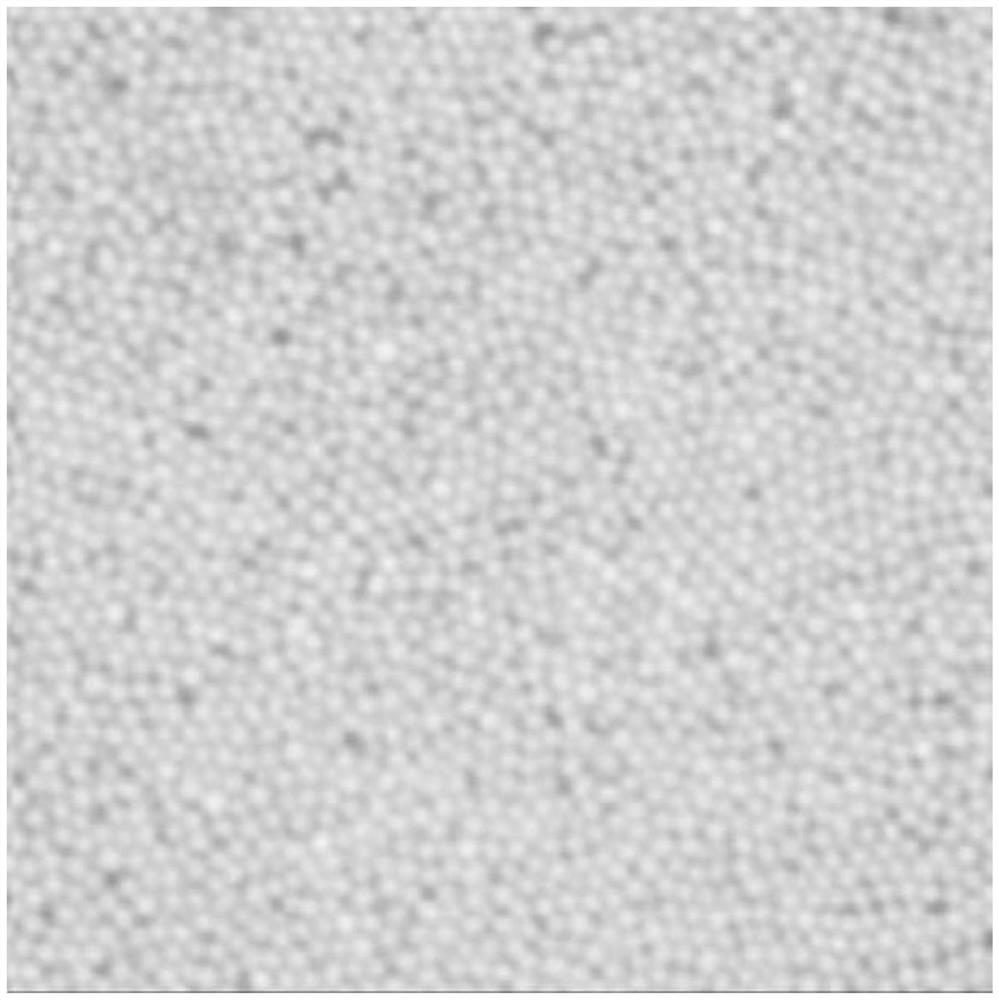Nano-microsphere heptamer as well as preparation method and application thereof
A nano-microsphere and polymer technology, applied in the field of excimer Fano structure preparation, can solve the problems of complex method and difficult precision control, and achieve the effects of simple operation, large electromagnetic near-field enhancement, and easy process to achieve precise control.
- Summary
- Abstract
- Description
- Claims
- Application Information
AI Technical Summary
Problems solved by technology
Method used
Image
Examples
Embodiment 1
[0047] Taking nano-gold heptamer as an example, a relatively dense gold nanoparticle film is first prepared:
[0048] (1), prepare the Tetramethylammonium Chloride solution of 1ml 3mol / L earlier, be that the test tube of 2ml is placed on the electronic scale, after peeling, weigh 0.3288mg anhydrous Tetramethylammonium Chloride crystallization, then Add 1ml of deionized water to dissolve fully;
[0049] (2) The silicon wafer and the glass petri dish with a diameter of 3 cm were ultrasonically cleaned in acetone, absolute ethanol, and deionized water for 180 s in order to remove surface organic solvents and other water-soluble impurities. Take out and dry. Then it was placed in a plasma cleaning machine for 90s to increase its hydrophilicity. Place the treated silicon chip at the bottom of a glass petri dish, use a pipette gun to successively take 3ml of nano-gold colloid with a particle size of 200nm, add 1ml of cyclohexane into the glass petri dish, and then take 400μL of (2...
Embodiment 2
[0054] In this embodiment, on the basis of the gold nanoparticle film obtained in Example 1, a silicon-based template with a hole structure is used to form a heptamer, specifically:
[0055] Steps (1) to (3) of this embodiment are the same as in Embodiment 1, only the pure silicon wafer is replaced by a silicon-based template with a hole structure to prepare a gold nanoparticle film.
[0056] (4) Use scotch tape to stick off excess gold nanoparticles on the surface of the silicon-based template, leaving only oligomers in the holes.
[0057] The test result of this embodiment:
[0058] Characterized by scanning electron microscopy, the resulting heptamer was as Figure 4 shown. The pore diameter of the silicon-based template is 600 nm, the period is 1 μm, and the pore depth is 200 nm. Since the position of the large-area gold nanoparticle film on the silicon-based template is uncertain, and the area with a hole structure is only 100 μm × 100 μm, the density and number of hep...
Embodiment 3
[0060] This embodiment is consistent with Embodiment 2, and only the silicon-based template with a hole structure is replaced with an AAO template with a hole structure. The specific process principle is as follows figure 1 shown.
[0061] The test result of this embodiment:
[0062] Characterized by scanning electron microscopy, the resulting heptamer was as Figure 5 shown. The pore diameter of the AAO template is 480nm, the period is 450nm, and the pore depth is 450nm. Since the hole structure of the AAO template is continuously distributed on the substrate, the heptamer formed is better than that on the silicon-based template.
PUM
| Property | Measurement | Unit |
|---|---|---|
| particle diameter | aaaaa | aaaaa |
Abstract
Description
Claims
Application Information
 Login to View More
Login to View More - Generate Ideas
- Intellectual Property
- Life Sciences
- Materials
- Tech Scout
- Unparalleled Data Quality
- Higher Quality Content
- 60% Fewer Hallucinations
Browse by: Latest US Patents, China's latest patents, Technical Efficacy Thesaurus, Application Domain, Technology Topic, Popular Technical Reports.
© 2025 PatSnap. All rights reserved.Legal|Privacy policy|Modern Slavery Act Transparency Statement|Sitemap|About US| Contact US: help@patsnap.com



